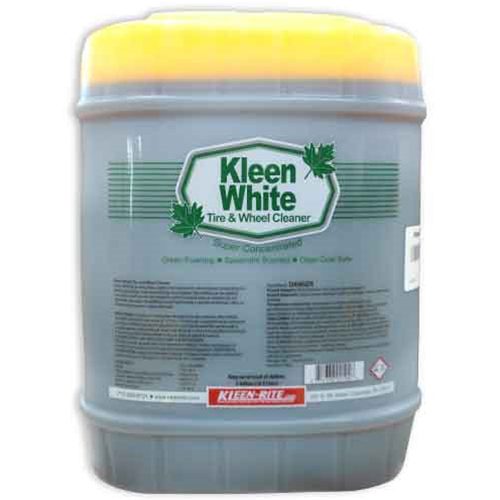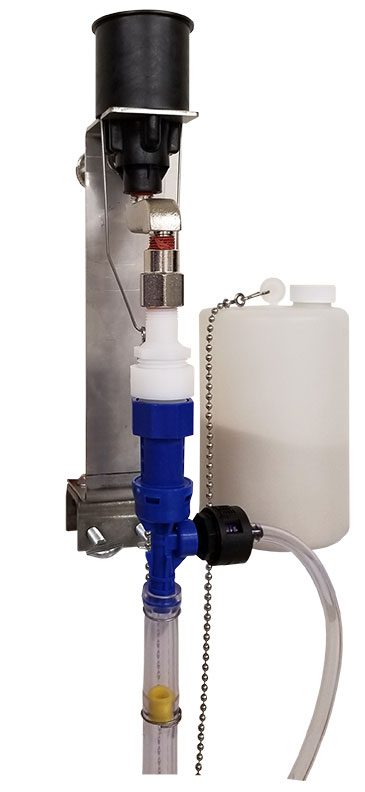Hydro Systems Ultra-Concentrate HydroMinders are not so much a new product as they are an expansion of their existing HydroMinder line. You can expect all the reliability of standard HydroMinders, but with added functionality that makes them ideal for ultra-concentrated chemicals. The tweaks were made to address the primary issues of dilution inaccuracy, water pressure fluctuation, and clogging that are frequently associated with processing highly concentrated chemicals.
Dosatron and HydraFlex are the only current options on the market for dispensing ultra-concentrates in car wash applications. Ultra-Concentrate HydroMinders are the first venturi-based float valves for car washes that can be used with hyper-concentrates down to 2500:1. Car wash operators have a new low pressure venturi solution that allows them to handle the fast-growing ultra-concentrate chemical segment of the market and reduce the chances for expensive car rewash or chemical waste due to inaccurate chemical dilution or equipment downtime.
What is the Same as Other HydroMinders?
- Water valve
- Float
- Chain
Differences with New Ultra-Concentrate HydroMinders
- Extended bracket to accommodate new technology
- AccuPro technology
- Blue eductor for flow rates up to 5 GPM
- ULDs instead of metering tips (for higher dilutions)
What are ULDs?
The purpose of ULDs (Ultra Lean Devices) is exactly the same as metering tips, with the added advantage that these devices are designed to avoid clogging. If you use ultra-concentrated chemicals, you’ve probably experienced significant clogging in your metering tips. Since ultra-lean tips are so small, and you’re dealing with a hole not much bigger than the head of a pin, a minimal amount of residue can clog a tip in no time.
Hydro Systems has a great answer to this problem with their ingenious ULDs. Included with their Ultra-Concentrate HydroMinders, these cylindrical devices use a system of small disks to alter the dilution rate.
The disks are layered and positioned strategically to achieve the desired dilution rate. Each disk has a long channel carved into it, and the chemical must move through the channel on its path to the eductor. Depending on which type of disks (color coded) are present and how many are active, the length and complexity of the channel changes. As a result, the amount of time it takes for the chemical to move through the ULD increases or decreases. The longer it takes, the leaner the dilution. Hydro describes this metering/proportioning method as “torturous path technology.”
The reason ULDs do not get clogged is because the channels on the disks are wider than metering tip holes. That very significantly reduces the amount of buildup and residue that gets caught in the device, thereby virtually eliminating clogging.
Choosing the Right ULD
Each Ultra-Concentrate HydroMinder comes with four ULDs at different levels from the bottom to the top of the dilution range associated with the model you purchased. Each ULD has different color disks in a unique formation that allows you to determine the dilution rate.
On the side of the cylinder, there is a small window where you can see the disks inside. That first allows you to identify the color of the disks. Next, you look closely at the tiny tabs on the disks and use their arrangement to determine whether 1, 2, 3, 4, or 5 disks are active. Consult the small table above the window on the ULD to determine the active disk number. There are also guide drawings in the data sheet to help.
Once you know the color and number of active disks, consult the chart in the data sheet that provides the corresponding dilution rate.
Installing and Using ULDs
After selecting the appropriate ULD for your application, installation and use of it is simple. For standard dilutions, there is a hose barb threaded into the eductor where metering tips are installed and the chemical hose is connected. With a ULD, this barb is removed and no metering tip is used. Instead, the ULD is threaded directly into the eductor and the disks do the metering/proportioning. The ULD has a built-in barb where the chemical hose is attached.
Visit the Kleen-Rite YouTube channel and watch our video about Hydro Systems ULDs!
What is AccuPro Technology?
Hydro’s AccuPro technology is something they commonly use in their push button dispensers for other industries. The AccuPro is located in between the water valve body and the eductor. It’s an in-line pressure regulator that chokes down the water pressure to 40 PSI. This helps maintain the integrity of the chemical and water mixture, even when the pressure of the water entering the valve fluctuates. It does not need to be turned on and off and it’s only actuated when the valve is open, so it’s less prone to failure.
What Kind of Chemicals can be Used with Ultra-Concentrate HydroMinders?
These new HydroMinders can be used with nearly anything, from presoaks and detergents to tire cleaners and protectants. They are usable with low pH, neutral, and high pH formulas. One of the great features of HydroMinders is that chemicals enter through the eductor, so they don’t have to pass through the water valve and other components near the top of the unit. Drastically cutting down on the number of parts that chemicals touch means better compatibility.



How do Ultra-Concentrate HydroMinders Stack Up to Dema AquaMasters?
Dema Aquamasters are another float valve option on the car wash market. Here’s how the specifications and features of a new HydroMinder compare to a Dema Aquamaster 440.22TKR.
Dilution Rates
The Ultra-Concentrate HydroMinders have a dilution rate range of 7:1-2500:1, while the range for a Dema Aquamaster runs from 4:1 to only 430:1. Even if you tried to use different metering tips or alter the Aquamaster, you won’t be able to achieve the same dilution rates as the ULD-equipped HydroMinders without serious inconsistency and clogging.
Dilution Accuracy
Hydro Systems tested and measured both units for dilution accuracy. The new HydroMinders maintained a +/-10% or less difference between actual and published dilution ratios at all levels. The difference between the actual and published dilution ratio for the Aquamaster was more than 10% at almost all levels, with inaccuracy as high as 112% (test results for a light blue tip averaged 12.71:1, while the published ratio is 6:1).
Backflow Prevention
The new HydroMinders use an E-gap eductor that prevents water backflow that can be unsafe or damage the unit. Dema Aquamasters have no backflow prevention.
Safety Labeling
The bracket on the new HydroMinders includes a colorful, prominent safety warning label sticker. Aquamasters are not labelled for safety.
Through-Hole Diameter
The new HydroMinders have larger through-holes than the Aquamaster, allowing for higher flow rates. There is a direct correlation between flow and vacuum performance. Hydro’s eductor is designed for higher flow rates and, as a result, reaching higher vacuum performance needs additional water pressure since Hydro’s design is more proportional in nature. When pressure fluctuations occur, chemical dilution accuracy will be less impacted with Hydro’s design.
Burst Test Pressure
Burst test results for a new HydroMinder were above 800 PSI. Leakage occurred at approximately 150 PSI for the Aquamaster, with a burst at 200 PSI. That means the new HydroMinder is much safer if mistakenly overpressurized.
Fluid Conveyance Connections
All metal-to-metal connections where fluid is transferred on the new HydroMinders use Vibraseal thread sealant. Plastic-to-plastic connections are sealed with Loctite. Aquamaster connections are not sealed.
Water Inlet Filtration
New HydroMinders exhibit better filtration since they have a finer mesh strainer.
Magnet Material
Aquamasters use rare earth magnets, while new HydroMinders use ceramic magnets that are less susceptible to rust.
Next Step for HydroMinders
Finding ultra-concentrated chemicals that work for you can be a game changer for your car wash. You save space by having fewer drums (or potentially not using 30/55-gallon drums at all), plus your shipping costs are reduced. Finding great hyper-concentrates is the first step, but it’s absolutely crucial to find a dispensing system that can deliver the required dilution rates you need to use them. For decades, HydroMinders have been known as a reliable cost-effective solution for chemical management. Now, they’ve evolved to keep up with a changing car wash industry using ultra-concentrated chemicals more and more each year!
IN550CWTP HydroMinder for Ultra-Concentrates – 550:1 to 7:1
IN1000CW HydroMinder for Ultra-Concentrates – 1000:1 to 600:1
IN550CW HydroMinder for Ultra-Concentrates – 550:1 to 300:1
IN1700CW HydroMinder for Ultra-Concentrates – 1700:1 to 1100:1
IN2500CW HydroMinder for Ultra-Concentrates – 2500:1 to 1800:1






